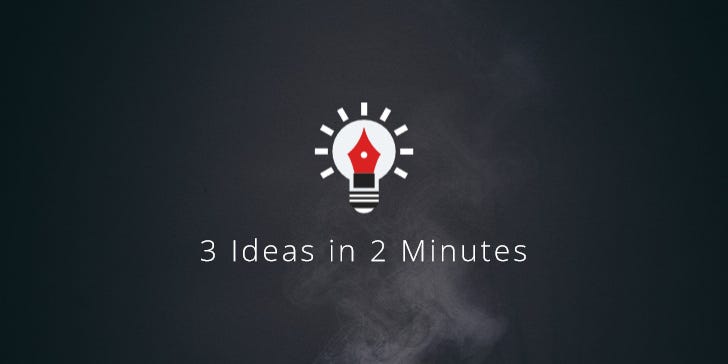#209: The Tell Tale, Reid Technique & Bait Question
3 Ideas in 2 Minutes on Interrogation Secrets
I. The Tell Tale
Body language can be a good indicator of a person’s emotional state. (Are they nervous, stressed or confident?) But it’s not a reliable tell for someone lying.
A big deal has been made about “tells” (to use a poker term). The real issue is context — and this is actually how a polygraph works.
A polygraph operator is supposed to ask you a series of control questions that you should answer truthfully. This lays down your baseline for truth-telling. We all pretty much tell the truth “the same way” every time.
You may lie seven different ways, but you tell the truth one way (if you tell the truth).
Then when you deviate from that one way, that’s at least an indicator of the information being filtered and not coming out straight and unvarnished. It’s a potential indicator of deception — or at least hesitation.
But there could be many, many reasons for hesitation. This is where people get into trouble because it’s too easy to assume the worst. Keep in mind that someone could still tell the truth after hesitating.
—Chris Voss, How to Use Body Language as a Negotiation Tactic
II. Reid Technique
The Reid Technique of interviewing and interrogation is a structured method designed to elicit confessions from suspects. It comes in roughly two phases:
Part one, the interview phase, consists of a non-accusatory conversation to build rapport and establish that baseline of truthful behaviour I mentioned earlier. The interrogator will look for inconsistencies or signs of deception in a suspect’s conduct.
If there’s a suspicion of guilt, the interrogation phase begins. It follows an elaborate nine steps with the goal of getting a confession. The steps include accusing the suspect of the crime, discouraging denials, offering acceptable motives and guiding the suspect towards admitting guilt.
As an accusatory and confrontational approach, the technique is commonly used in the United States, and less so in the UK, Europe or Australia. It probably won’t come as a surprise that the Reid Technique has been criticised as manipulative and coercive and prone to eliciting false confessions.
III. Punishment Question
Another sneaky way of identifying the guilty is by asking the Punishment Question. According to interrogation expert Chase Hughes, this works on both, hardened criminals and your kids. We all react the same when being asked:
What do you think should happen to the person who did this?
The guilty will always advocate for leniency and mild punishments. While the innocent usually do not hold back.
Hughes gives the example of him coming home and finding chocolate milk spilled on the living room carpet. What do you reckon, who spilled the milk? Charlotte or William? Look at his kids’ answers to the question of what should happen to the person who did this:
Charlotte: “Spanking, no more X-Box, no more electronics, can’t go outside, can’t play with friends, grounded…”
William: “No more chocolate milk in the living room?”
Source: Chase Hughes, How An Interrogation Expert Spots A LIAR
🐘
Have a great week,
Chris
themindcollection.com


The Reid Technique used to be standard training for Army Intel Agents. I am not sure if they still use it. Step one is standard elicitation technique that you can find with any moderately good salesman. To test this, the next time you consider a large purchase, like a car or major appliance, listen to the salesperson. He or she will take whatever personal details you share in the first few minutes of conversation and turn them to a personal experience he or she had. From there, the salesperson will build as many links as possible so that you are less likely to decide not to buy from your new "friend." Elicitation works the same way and a skilled interviewer can steer the very normal, friendly conversation into the interrogation phase without the interviewee ever realizing the real interview started. Sneaky but wildly effective.